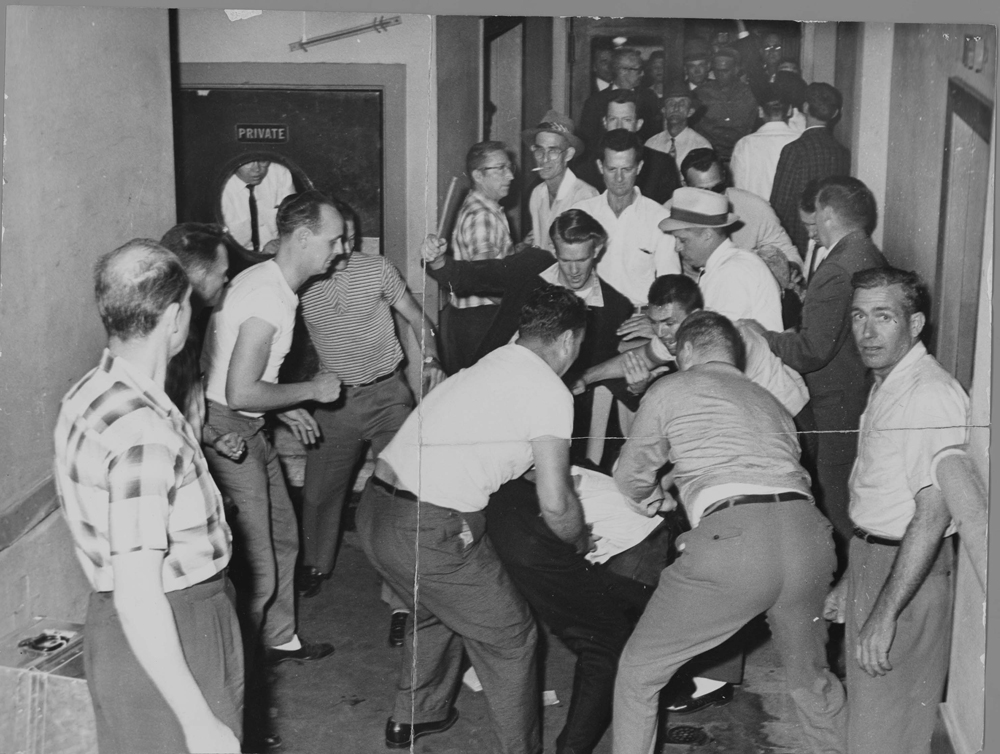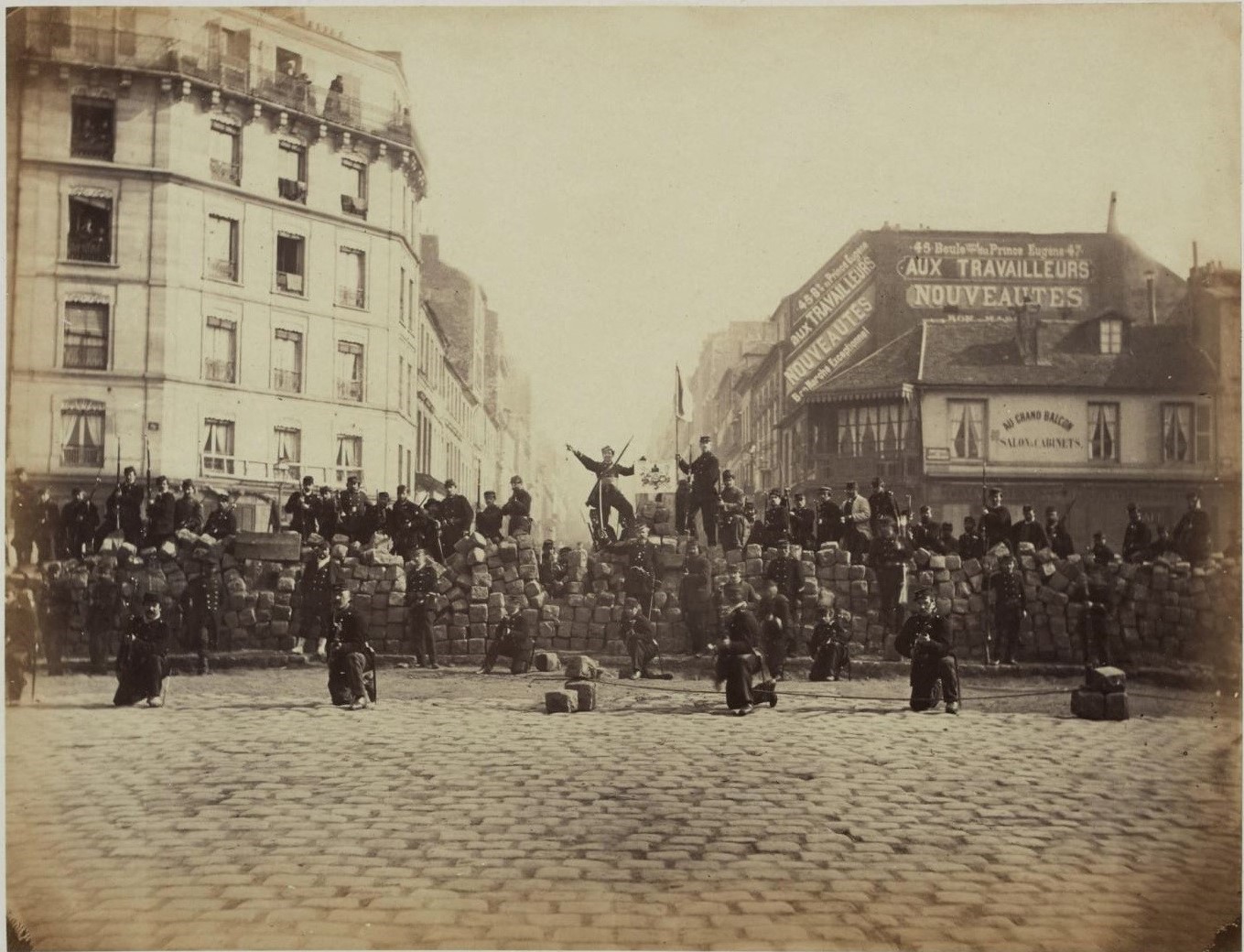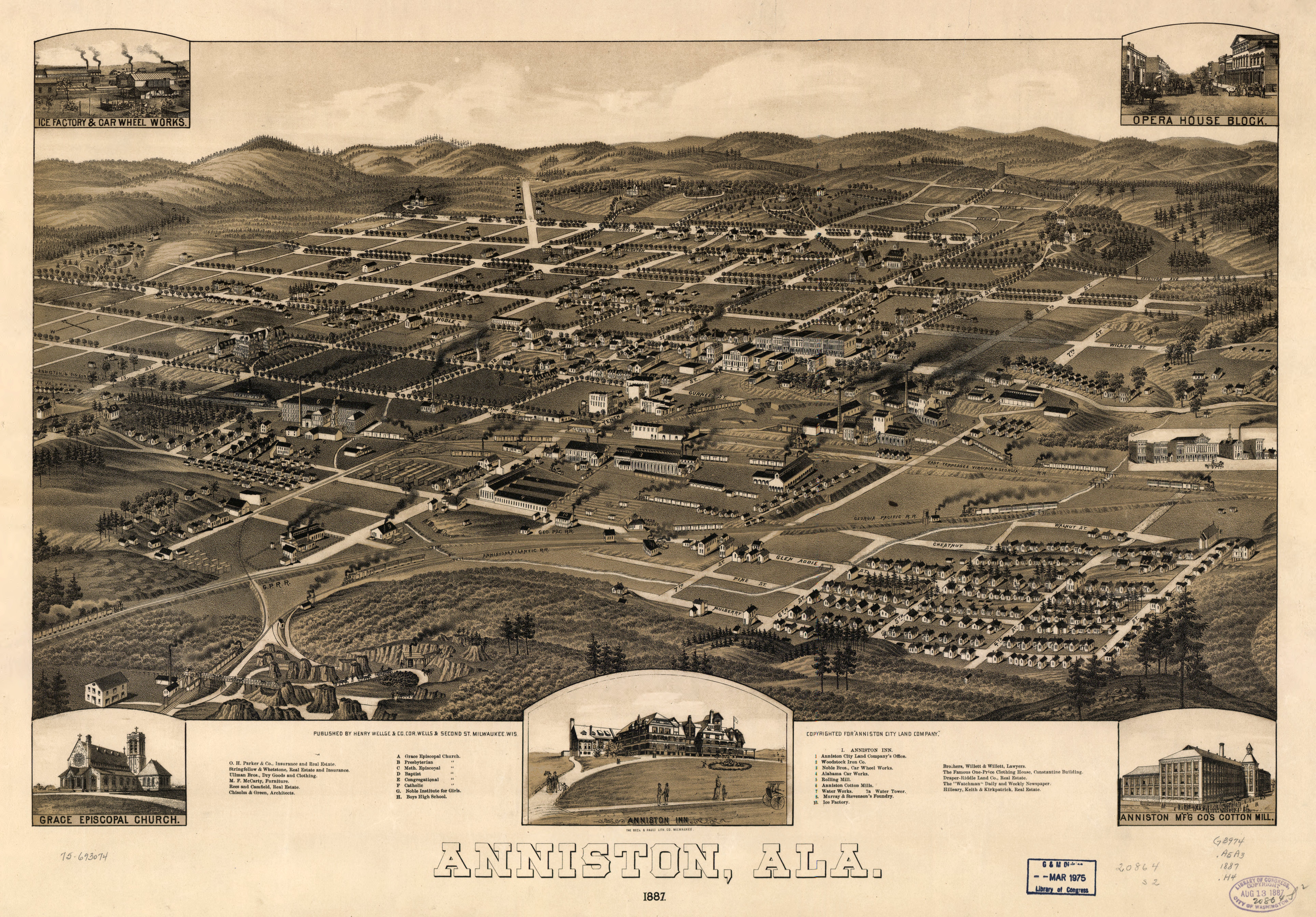|
Zwerg
James Zwerg (born November 28, 1939) is an American retired minister who was involved with the Freedom Riders in the early 1960s. Early life Zwerg was born in Appleton, Wisconsin where he lived with his parents and older brother, Charles. His father was a dentist who once a month provided free dental care to the poor . Zwerg was very involved in school and took part in the student protests in high school. Zwerg was also very active in the Christian church, where he attended services regularly. Through the church, he became exposed to the belief in civil equality. He was taught that all people are created equal, no matter what race or religion they are. College and SNCC Zwerg attended Beloit College, where he studied sociology. He developed an interest in civil rights from his interactions with his roommate, Robert Carter, an African-American from Georgia. Zwerg recalls: " I witnessed prejudice against him… we would go to a lunch counter or cafeteria and people would get up ... [...More Info...] [...Related Items...] OR: [Wikipedia] [Google] [Baidu] |
Freedom Rider
Freedom Riders were civil rights activists who rode interstate buses into the segregated Southern United States in 1961 and subsequent years to challenge the non-enforcement of the United States Supreme Court decisions ''Morgan v. Virginia'' (1946) and ''Boynton v. Virginia'' (1960), which ruled that segregated public buses were unconstitutional. The Southern states had ignored the rulings and the federal government did nothing to enforce them. The first Freedom Ride left Washington, D.C. on May 4, 1961, and was scheduled to arrive in New Orleans on May 17. ''Boynton'' outlawed racial segregation in the restaurants and waiting rooms in terminals serving buses that crossed state lines. Five years prior to the ''Boynton'' ruling, the Interstate Commerce Commission (ICC) had issued a ruling in '' Sarah Keys v. Carolina Coach Company'' (1955) that had explicitly denounced the ''Plessy v. Ferguson'' (1896) doctrine of separate but equal in interstate bus travel. The ICC failed to ... [...More Info...] [...Related Items...] OR: [Wikipedia] [Google] [Baidu] |
Freedom Riders
Freedom Riders were civil rights activists who rode interstate buses into the segregated Southern United States in 1961 and subsequent years to challenge the non-enforcement of the United States Supreme Court decisions ''Morgan v. Virginia'' (1946) and ''Boynton v. Virginia'' (1960), which ruled that segregated public buses were unconstitutional. The Southern states had ignored the rulings and the federal government did nothing to enforce them. The first Freedom Ride left Washington, D.C. on May 4, 1961, and was scheduled to arrive in New Orleans on May 17. ''Boynton'' outlawed racial segregation in the restaurants and waiting rooms in terminals serving buses that crossed state lines. Five years prior to the ''Boynton'' ruling, the Interstate Commerce Commission (ICC) had issued a ruling in '' Sarah Keys v. Carolina Coach Company'' (1955) that had explicitly denounced the ''Plessy v. Ferguson'' (1896) doctrine of separate but equal in interstate bus travel. The ICC failed to ... [...More Info...] [...Related Items...] OR: [Wikipedia] [Google] [Baidu] |
John Lewis
John Robert Lewis (February 21, 1940 – July 17, 2020) was an American politician and civil rights activist who served in the United States House of Representatives for from 1987 until his death in 2020. He participated in the 1960 Nashville sit-ins, the Freedom Rides, was the chairman of the Student Nonviolent Coordinating Committee (SNCC) from 1963 to 1966, and was one of the " Big Six" leaders of groups who organized the 1963 March on Washington. Fulfilling many key roles in the civil rights movement and its actions to end legalized racial segregation in the United States, in 1965 Lewis led the first of three Selma to Montgomery marches across the Edmund Pettus Bridge where, in an incident which became known as Bloody Sunday, state troopers and police attacked Lewis and the other marchers. A member of the Democratic Party, Lewis was first elected to the U.S. House of Representatives in 1986 and served 17 terms. The district he represented included most of Atlanta. Due to hi ... [...More Info...] [...Related Items...] OR: [Wikipedia] [Google] [Baidu] |
Greyhound Bus Station (Montgomery, Alabama)
The Freedom Rides Museum is located at 210 South Court Street in Montgomery, Alabama, in the building which was until 1995 the Montgomery Greyhound Bus Station. It was the site of a violent attack on participants in the 1961 Freedom Ride during the Civil Rights Movement. The May 1961 assaults, carried out by a mob of white protesters who confronted the civil rights activists, "shocked the nation and led the Kennedy Administration to side with civil rights protesters for the first time." The property is no longer used as a bus station, but the building was saved from demolition and its façade has been restored. The site was leased by the Alabama Historical Commission and a historical marker was located in front of the building. In 2011, a museum was opened inside the building, and it was listed on the National Register of Historic Places. The museum won a national preservation award from the National Trust for Historic Preservation in 2012. Construction In 1950, Greyhound Line ... [...More Info...] [...Related Items...] OR: [Wikipedia] [Google] [Baidu] |
Beloit College
Beloit College is a private liberal arts college in Beloit, Wisconsin. Founded in 1846, when Wisconsin was still a territory, it is the state's oldest continuously operated college. It is a member of the Associated Colleges of the Midwest and has an enrollment of roughly 1,400 undergraduate students. History Beloit College was founded by the group Friends for Education, which was started by seven pioneers from New England who, soon after their arrival in the Wisconsin Territory, agreed that a college needed to be established. The group raised funds for a college in their town and convinced the territorial legislature to enact the charter for Beloit College on February 2, 1846. The first building (then called Middle College) was built in 1847, and remains in operation. Classes began in the fall of 1847, with the first degrees awarded in 1851. Beloit's first president was a Yale University graduate, Aaron Lucius Chapin, who served from 1849 to 1886. The college became coeducationa ... [...More Info...] [...Related Items...] OR: [Wikipedia] [Google] [Baidu] |
Southern Christian Leadership Conference
The Southern Christian Leadership Conference (SCLC) is an African-American civil rights organization based in Atlanta, Georgia. SCLC is closely associated with its first president, Martin Luther King Jr., who had a large role in the American civil rights movement. Founding On January 10, 1957, following the Montgomery bus boycott victory against the white democracy and consultations with Bayard Rustin, Ella Baker, and others, Martin Luther King Jr. invited about 60 black ministers and leaders to Ebenezer Church in Atlanta. Prior to this, Rustin, in New York City, conceived the idea of initiating such an effort and first sought C. K. Steele to make the call and take the lead role. Steele declined, but told Rustin he would be glad to work right beside him if he sought King in Montgomery for the role. Their goal was to form an organization to coordinate and support nonviolent direct action as a method of desegregating bus systems across the South. In addition to King, Rustin, Ba ... [...More Info...] [...Related Items...] OR: [Wikipedia] [Google] [Baidu] |
Martin Luther King Jr
Martin Luther King Jr. (born Michael King Jr.; January 15, 1929 – April 4, 1968) was an American Baptist minister and activist, one of the most prominent leaders in the civil rights movement from 1955 until his assassination in 1968. An African American church leader and the son of early civil rights activist and minister Martin Luther King Sr., King advanced civil rights for people of color in the United States through nonviolence and civil disobedience. Inspired by his Christian beliefs and the nonviolent activism of Mahatma Gandhi, he led targeted, nonviolent resistance against Jim Crow laws and other forms of discrimination. King participated in and led marches for the right to vote, desegregation, labor rights, and other civil rights. He oversaw the 1955 Montgomery bus boycott and later became the first president of the Southern Christian Leadership Conference (SCLC). As president of the SCLC, he led the unsuccessful Albany Movement in Albany, ... [...More Info...] [...Related Items...] OR: [Wikipedia] [Google] [Baidu] |
Ambush
An ambush is a long-established military tactics, military tactic in which a combatant uses an advantage of concealment or the element of surprise to attack unsuspecting enemy combatants from concealed positions, such as among dense underbrush or behind mountaintops. Ambushes have been used consistently throughout history, from ancient warfare, ancient to modern warfare. In the 20th century, an ambush might involve thousands of soldiers on a large scale, such as over a choke point such as a mountain pass, or a small irregulars band or insurgent group attacking a Regular army, regular armed force patrols. Theoretically, a single well-armed and concealed soldier could ambush other troops in a surprise attack. Sometimes an ambush can involve the exclusive or combined use of improvised explosive devices, that allow the attackers to hit enemy convoys or patrols while minimizing the risk of being exposed to return fire. History This use by early people of ambushing may date as far ... [...More Info...] [...Related Items...] OR: [Wikipedia] [Google] [Baidu] |
Activist
Activism (or Advocacy) consists of efforts to promote, impede, direct or intervene in social, political, economic or environmental reform with the desire to make changes in society toward a perceived greater good. Forms of activism range from mandate building in a community (including writing letters to newspapers), petitioning elected officials, running or contributing to a political campaign, preferential patronage (or boycott) of businesses, and demonstrative forms of activism like rallies, street marches, strikes, sit-ins, or hunger strikes. Activism may be performed on a day-to-day basis in a wide variety of ways, including through the creation of art ( artivism), computer hacking (hacktivism), or simply in how one chooses to spend their money (economic activism). For example, the refusal to buy clothes or other merchandise from a company as a protest against the exploitation of workers by that company could be considered an expression of activism. However, the most ... [...More Info...] [...Related Items...] OR: [Wikipedia] [Google] [Baidu] |
Garrett Theological Seminary
Garrett may refer to: Places ;United States * Garrett, Illinois * Garrett, Indiana * Garrett, Kentucky (multiple places) ** Garrett, Floyd County, Kentucky, an unincorporated community ** Garrett, Meade County, Kentucky, an unincorporated community * Garrett, Missouri * Garrett, Pennsylvania * Garrett, Texas * Garrett, Washington * Garrett, Wyoming * Garrett County, Maryland Other uses *Garrett (name), given name and surname * Garrett AiResearch, a former manufacturer of turbochargers and turbine engines, now part of Honeywell, Inc. ** Garrett - Advancing Motion, manufacturer of turbochargers for ground vehicles * ''Garrett P.I.'', a fantasy series by Glen Cook, whose protagonist is a human named Garrett * Richard Garrett & Sons, a manufacturer of steam engines and agricultural machinery * Garrett (character), the player character and protagonist of the ''Thief'' video games series * Garrett-Evangelical Theological Seminary, a graduate school of theology affiliated with the Un ... [...More Info...] [...Related Items...] OR: [Wikipedia] [Google] [Baidu] |
Birmingham, Alabama
Birmingham ( ) is a city in the north central region of the U.S. state of Alabama. Birmingham is the seat of Jefferson County, Alabama's most populous county. As of the 2021 census estimates, Birmingham had a population of 197,575, down 1% from the 2020 Census, making it Alabama's third-most populous city after Huntsville and Montgomery. The broader Birmingham metropolitan area had a 2020 population of 1,115,289, and is the largest metropolitan area in Alabama as well as the 50th-most populous in the United States. Birmingham serves as an important regional hub and is associated with the Deep South, Piedmont, and Appalachian regions of the nation. Birmingham was founded in 1871, during the post- Civil War Reconstruction period, through the merger of three pre-existing farm towns, notably, Elyton. It grew from there, annexing many more of its smaller neighbors, into an industrial and railroad transportation center with a focus on mining, the iron and steel industry, ... [...More Info...] [...Related Items...] OR: [Wikipedia] [Google] [Baidu] |
Anniston, Alabama
Anniston is the county seat of Calhoun County in Alabama and is one of two urban centers/principal cities of and included in the Anniston-Oxford Metropolitan Statistical Area. As of the 2010 census, the population of the city was 23,106. According to 2019 Census estimates, the city had a population of 21,287. Named "The Model City" by Atlanta newspaperman Henry W. Grady for its careful planning in the late 19th century, the city is situated on the slope of Blue Mountain. History Civil War Though the surrounding area was settled much earlier, the mineral resources in the area of Anniston were not exploited until the Civil War. The Confederate States of America then operated an iron furnace near present-day downtown Anniston, until it was finally destroyed by raiding Union cavalry in early 1865. Later, cast iron for sewer systems became the focus of Anniston's industrial output. Cast iron pipe, also called soil pipe, was popular until the advent of plastic pipe in the 1960s. ... [...More Info...] [...Related Items...] OR: [Wikipedia] [Google] [Baidu] |









